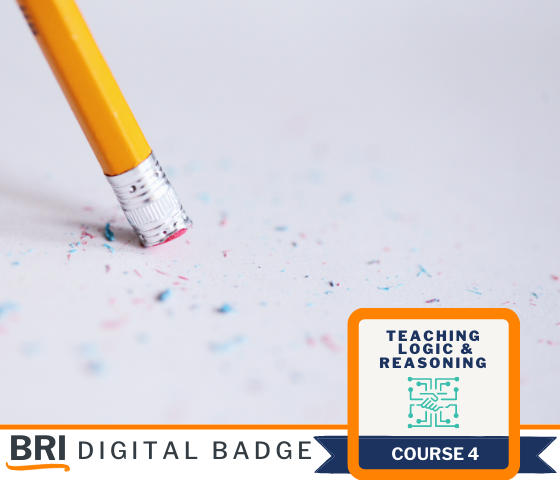
Errors in Logic – Biases and Fallacies
“When examining evidence relevant to a given belief, people are inclined to see what they expect to see, and conclude what they expect to conclude. Information that is consistent with our pre-existing beliefs is often accepted at face value, whereas evidence that contradicts them is critically scrutinized and discounted. Our beliefs may thus be less responsive than they should to the implications of new information”
— Thomas Gilovich, How We Know What Isn’t So: The Fallibility of Human Reason in Everyday Life, 1993
Introduction
Welcome to Errors in Logic – Biases and Fallacies , the last course in the BRI’s online program, Teaching Logic and Reasoning!
Have you encountered Sir Arthur Conan Doyle’s famous quote, “Once you eliminate the impossible, whatever remains, no matter how improbably, must be the truth?” It sounds smart, doesn’t it? The only problem is it is logically wrong. This fallacy illustrates how present errors in logic are in our common vernacular and dialogic experiences.
This course will discuss how to identify those errors in logic, and how these interfere with our reasoning and arguments. Through the exploration of cognitive biases and logical fallacies, we will understand how they may present themselves in our everyday civic lives. We will also look at how we can help students identify these fallacies in the real world, but also in their own reasoning to help provide clarity in their thought.
Learning Objectives
Upon completion of this course, you will be able to:
- Define and examine examples of cognitive biases and logical fallacies.
- Analyze arguments to determine errors in logic.
- Analyze applications of cognitive biases and logical fallacies in civic life and the classroom.
- Reflect on developing students’ skills to identify errors in logic.
- Evaluate examples of errors in logic in civic life and the classroom.

